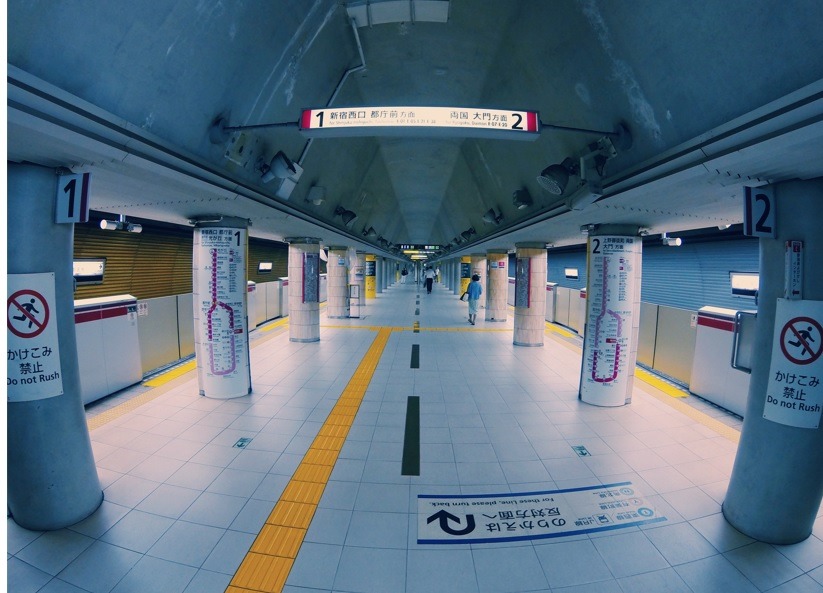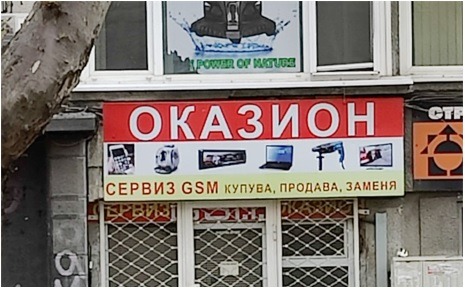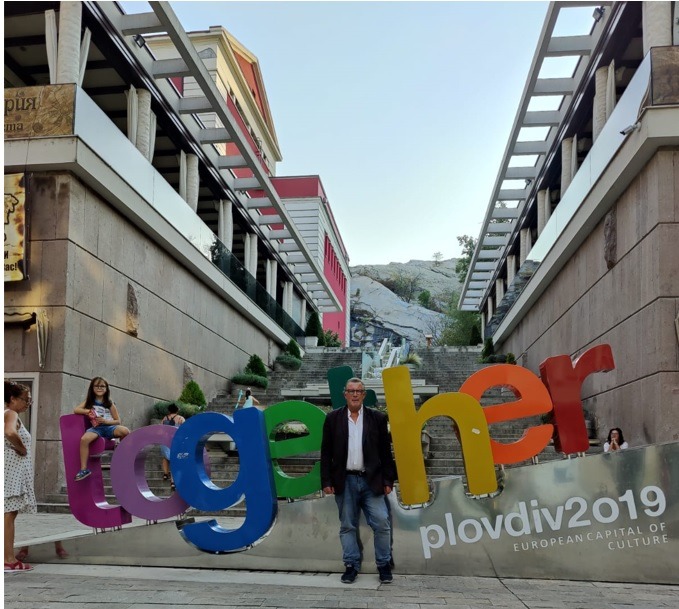Translating beyond words. Summary of the conference
I gave this lecture in French on translation in October 2001. The event was held at La Galerne Bookshop in Le Havre (France), in collaboration with the University of Le Havre, on the occasion of the European Language Week.
As a matter of fact,I think this text is still relevant, although it is about ten years old now. My original text has been updated several times in French to take recent developments into account. The present text is the first English “version” and not the “translation”. The present work is an adaptation of my initial text in French. For obvious reasons you will discover why when reading what follows.
This conference is about the changes that have taken place over time and which have changed the way we translate. It also addresses the importance of considering the cultural dimension in the translation process.
It also deals with the translator’s responsibility and involvement with the source text to be translated.
To what extent is the translator who has perceived something unsaid (or unexpressed) allowed to assist the author to help him or her express what he or she has not clearly said in the message, so that the original meaning and willingness to communicate is fully respected and promoted?
Patrick Lemarié
The profession of translator
The profession of translator is still little known to the general public. However, its role is becoming increasingly important in an international context.
This profession has evolved considerably if we consider some of the emblematic landmarks of this profession:
Firstly, our Patron Saint Jerome who was born in 347 in Stridon in Dalmatia. He translated the Bible into Latin with the help of nuns.
Secondly, the phthisic translator described by Zola in his novel L’Argent. A bedridden linguist copying with a goose feather a translation made for the businessman Saccard. The latter was an intellectual more concerned with pursuing his personal research. Mainly busy translating Karl Marx’s Capital, and not really preoccupied about providing for his own financial needs.
And finally, the 21st century translator translating thanks to his computer and the terminology databases accessible on the Internet.
The basic activity and the objective of course remain the same:
- To solve the problem of incommunicability.
- To make people from different cultures and speaking different languages understand each other.
The translator has a delicate task and is somewhat removed from the author he serves. For fear of being accused of a traitor according to the well-known adage (translator trahidor).
Translating without interpreting!
Translating without interpreting is the translator’s mission. However, is it always necessary to conform to the original and simply translate what the author has expressed or believed to have expressed.
Isn’t it wiser, after having sensed that the source text as we call it among specialists is not a priori a reflection of what the author wanted to express, to make the necessary modifications to serve the essential meaning?
It is desirable, however, that these modifications be made with the author’s agreement.
Of course, I am speaking here from my experience as a technical translator. Obviously, It is not a question of pretending to correct famous authors. Moreover, we do not claim that their prose is not a reflection of their thoughts. However, in every act of writing there is a part of the unconscious mind that expresses itself. But just as a speaker can make slips of the tongue. Why should the written text not contain missed acts or words either?
Above all, a good translator, in my opinion, must know how to discern inconsistencies in the written text. Moreover, he must check with the author whether the latter has expressed the substance of his thought in the words he has chosen.
Therefore,, It would be easy to retort that the translator does not have to interfere with the author’s content. Furthermore, it is indeed the author’s responsibility to ensure that his text conforms to what he wanted to express.
The translator a conveyor of meaning
In my opinion, this is not a crime of interference because the translator’s primary objective is to solve incommunicability. He must free himself from the divine punishment of the Tower of Babel. In order to accomplish his mission all effective means are legitimate.
The translator, by the hindsight and objectivity he can have in relation to the author, is in some cases better placed to point out inconsistencies or inaccuracies that could distort the message that had to be initially expressed.
In any case, author/translator dialogue is indispensable for many reasons:
First of all because some concepts do not exist in the target language and culture. It is often necessary either to rephrase or be descriptive. And furthermore, one must make an unknown concept explicit in the target language.
Focussing on source text or target text?
This naturally leads us to consider that translation is not just a matter of words. In fact it rather consists in going beyond words. Therefore, in order to understand this delicate exercise, it is useful to clarify two positions adopted in the profession:
Firstly, translators focusing on source texts who remain very close to the original text, the source text.
And secondly, translators focusing on target texts, who are closer to the destination text. The target text being what will ultimately be returned to the user.
I think that we do not translate the signifier or even the signified, but only the meaning. We do not translate the language but the word, the speech, the author’s message. In other words our objective is not to remain stuck to the source language. Our mission is to mobilise the means specific to the target language.
This is what Cicero already stated when he distinguished those who translate as mere interpreters. The pure and simple translators in Cicero’s pejorative formula « ut interpres » as opposed to those who translate « ut orator ».
This is why the « literalist » tendency is hardly acceptable.
Finding equivalents. A creative job
First of all let’s take the example of the expression in French “Trente-six chandelles” (thirty-six candles). In this case, it is no longer a question of numbers but of linguistics. As a result, it will be necessary to translate not by « thirty-six candles » but by a search for equivalents. For instance by « to see stars ». Don’t you think that seeing stars is just as poetic as seeing thirty-six candles!!!!
As a matter of fact, to privilege the source text would be to make translation a transcoding exercise. This is what some computer scientists have tried to do. In fact, they are still trying to reach this goal by developing automatic translation software with the poor results we know. Except for Deepl which is based on a more sophisticated algorithm.
Obviously, this works quite well for weather reports. For example, with extremely simplified syntax:
« cloudy weather in the morning with a clear improvement in the afternoon » but not for most other cases.
The translator’s job is actually to invent equivalences to be re-expressed.
To clarify, source translators put the emphasis on the signifier as if in the signifier, in the very form of the word, were enclosed the meaning that should be kept as close as possible. However, one passes from one language to another, which implies a redistribution of elements. So, the question is what am I willing to lose?
Under-translating or over-translating?
When in a translation we have to translate something that poses a problem:
either a word,
or an allusion,
or a quotation,
and finally a cultural reference,
- it is rare to systematically have an equivalent at our disposal. Moreover, we often do not have a direct equivalent at our disposal. Either in the target language, or in the target culture language of what we claim to translate from the source culture language. This is where the hesitation begins between over-translating and under-translating. In other words « if it’s important, then I’ll do it! If it’s important, then I’ll go all out!
- « So much the worse! This detail is going to have an importance that it would not have in the original text.
- Or else I’ll under-translate. It is s not important. It’s just something that allows the author to express what he has to say. It’s not the essence of his message and so I’ll under-translate.
Translating should not be a servile task !
It is true that this way of doing things, this discourse on translation could shock some people. Especially those used to the image of the translator in the shadow of the author. That is to say that of a conveyor of meaning attached to his servile task. A linguist restoring from the author’s frame constituted by the source text, a faithful copy of the original. A translator is not a copyist painter, nor a forger. However, I dare say that some translators, are just like some counterfeiting painters, who paint better than well-known painters. They have the talent to better render in the target language what was expressed by the author in the text and the source language.
Moving away from the language. An ascetic work
Let me take another example to illustrate my previous point. In Freud’s text « Die Angst vor dem Pferd ». The Fear of, the anguish in front of the horse or the fear of the horse?
Freud’s previous example is a good transition to what I am going to discuss now:
Moving away from the language and/or the principle of castration.
The source translators privilege the language, but what we know is that translating is by definition mourning the language.
To translate is to abandon the source language, reluctantly.
All translation work is a work of asceticism by which one must assume the loss. That is to say the unfinished. Translating is also assuming this part of renunciation.
A bit of humour when translating!
However, it is possible to remain very close to the text for literary or comic reasons, as in Asterix in Brittany, available in all good bookshops **, « Il fait beau, ne fait-il pas? « to allude to English and to make people smile. Anyone who has studied English knows that you don’t translate the tags and that the effect is partially rendered in French as « n’est-ce pas ».
English people say » it is raining cats and dogs « , it is very funny to say » it is raining cats and dogs » to change from » it is raining ropes « , however I am not convinced that it would make English people laugh if we translated literally by » it is raining ropes « , » il pleut des cordes « , here again humour is perceived differently from one culture to another, we do not have more or less humour than English people, we simply have a different perception of humour. However, this is not translation but transliteration or transcription.
Beyond the source language
The translator should accept to move away from the source language. Even if he thinks he can retain something of it. This process is somewhat close to mourning. Henri Meschonnic, in his translation of the Bible, translates the name of God by the Hebrew « Adonai ». As all equivalents, the Eternal etc. do not please him. God that Christianises, the Eternal that hellenises as if the Hebrew word Adonai went hand in hand with a kind of parody of the signifier. Annick de Souzenelle, in « L’Egypte intérieure ou “Les dix plaies de l’âme » (Inner Egypt or the Ten Wounds of the Soul) (Albin Michel), perfectly illustrates the difficulty of restoring in a translation the initial meaning expressed in Hebrew with all the dangers of possible interpretations when the reader is not guided by a specialist in the source language that was used to translate the initial text.
In fact, it is not even the term translation itself that is not appropriate. To clarify this point it is more appropriate to speak of localisation in the field of translating software. For example, when we translate computer manuals from English into French, we adapt them to the target country for French users.
Summarising our lecture
The most important points of this presentation can be summarised as follows:
- Firstly translation is not transcoding
- Secondly source translators are wrong to focus only on the signifier
- Thirdly source translators are wrong to cling to the language
- Fourthly source translators are wrong to lock themselves into the source language
Assimilation and dissimilation
There is also another very useful process in translation which is the concept of Dissimilation and not concealment (the translator is not always a traitor!!).
To draw a parallel with assimilation, which consists, for example, in saying in French “je sais pas” instead of “je ne sais pas” (I don’t know) because of contraction or assimilation, there is an attraction of the « j » by the « s ». It’s an assimilation, a principle by which words and sounds come closer together phonetically. One could also say that it is the tendency of the least effort but which can also sometimes be reversed when the sounds are too close together as in” Les chaussettes de l’archiduchesse sont-elles sèches? Archi-sèches ? ( Are the Archduchess’ socks dry? Very dry?)
Or “Un chasseur sachant chasser doit savoir chasser sans son chien ».
(A hunter who knows how to hunt must know how to hunt without his dog).
We also have similar tongue twisters in English, such as “I broke a brickbat and a brickbat broke me”, with the double meaning of brickbat:
1 – a piece of brick and
2- a frank criticism
A few other dissimilation examples
One tries to dissimilate. Instead of bringing the sounds closer together and making them indistinguishable, we try to separate them. To give a few examples of this process:
A corridor was originally “un courroir” in French, which is also found in “corridor” in French meaning corridor and hallway. A pilgrim was a “peregrin” in old French, which we also find in Spanish with peregrino. It is interesting to note that the Spaniards have kept this word without modification. It is true that the « r » in Spanish is more rolled than in French, where the « R » is more of an obstacle to the fluidity of the pronunciation of the word. By dissimilation, it is a question of using the meaning of the source language as a basis, using it to deviate from it. The more I deviate from it, the better I express it.
It is also the idea that a translation should always move away from the original by leaning on the original.
Signifier and signified
One does not translate the signifier or even the signified, i.e., the linguistic meaning, but the meaning of the message, the meaning of the word. We translate meaning. The translator conveys meaning.
We do not translate what is written, but what we think, in other words what the writer may have thought when he wrote it. So, we translate meaning and effects. There are, for example, rhythm effects in poetry which are specific to the source language and which are difficult to render or transpose into the target language, or we give in to a certain mimicry and introduce something which does not exist in the target language.
The translator’s creativity has its limits in this area and here again, in a nod to psychoanalysis, it is necessary to have overcome a certain narcissism in order to know what one can and cannot do. However, everything is not possible when it comes to translation, the translator is not a magician, even if sometimes it would be better for him to be an alchemist in order to transmute words into meaning.
What we are going to render are therefore meaning effects, stylistic effects, rhetorical effects, literary effects, poetic effects or even comic effects.
This is an aesthetic concept and not a physical concept in the sense of a measurable effect in a cause-and-effect relationship.
Translating philosophers and artists
Translating authors such as Kant or Shakespeare is not an easy task either. Here again the importance of the duality between source and target translators may be stressed.
Today’s translators of the philosopher Kant often resort to the process of under translation. This process enables them to get around the heaviness of the source text. In addition it allows them to over-translate the conceptual solidity of his subject matter.
To emphasise once again that target translators are serious people and do not translate the signifier, but the meaning. They do not translate the effects, nor the language but the speech. Moreover, they do not remain stuck to the source language but mobilise the resources of the target language. Let’s take the example of Shakespeare and his « To be or not to be, that is the question » in Hamlet.
Translating Shakespeare?!
The translation in French “être ou ne pas être” of the English original sentence « To be or not to be » is acceptable. After that it is more complicated. “C’est la question”, or “telle est la question” (that is the question). I admit I am not fully satisfied about it. For this reason, I must confess I am pleased not to have to experience this type of dilemma. As a matter of fact, in the daily exercise of my art, as a technical translator I never have to.
A translator, Gérald de Ropitaille, had suggested for « To be or not to be » “vivre ou mourir » (To live or to die). Of course you could retort that we are far from » to be or not to be « . And yet what Hamlet actually experiences and says in the play is “to live or to die”. Does this mean that the translator has better expressed in his translation what the author has written? I do say on purpose « written » and not expressed »? Undoubtedly, had Shakespeare expressed the meaning of ‘live or die’ well. However, the choice of words was insufficient to express the full depth of his work.
Translations better than originals
Does this mean that translations are sometimes better than the original?
More modestly than Shakespeare’s translation.
On several occasions I had to translate into English servicing reports for an industrial company, written by French technicians working on sites abroad. These reports were intended for the American subsidiary. As the style, syntax and choice of vocabulary were considerably simplified, I often had to phone the person concerned to obtain details on the content and the meaning of what the author had wanted to express.
Very often the translation was more precise than the original. Surprisingly, the executives of this company used the translation. That is to say the English version, during their meetings in France. However, the original text had not been distorted. As I had worked in depth with the author to restore all the meaning that the author wished to express. The real message he had been unable to express completely, due to linguistic inadequacies. I think that the translator’s mission is to facilitate communication and help extract meaning. To distill meaning.
Translating. A creative act
This example also shows that the translator can also be a co-author and re-writer and especially not a « rewriter ».
My other activity as an associate professor at the University of Le Havre has enabled me to understand my students’ fears of taking a step back from the text and reluctantly abandoning the « safe » position of the source translator. However, the fact of taking a step back and no longer considering the source text as a sacrosanct written text that must above all not be altered, allows one to grow and evolve towards greater freedom and creativity than the timid position of withdrawal into the sphere of the known. In my opinion, to translate also means to be an adult and to know how to detach oneself from things. To draw a parallel with psychology, one must know how to detach oneself from words, not to identify oneself but to adopt an attitude of observer in order to withdraw the essential, to extract the essence of the discourse.
Translation, interpretation and meta communication
In the case of interpreting or oral translation, if you prefer, a profession that I also practise, the written text disappears of course and only those clients remain who express themselves orally with, however, additional indications that are absent from a written text, I am referring to meta-communication or meta-signs. For the attentive speaker, there are silences, sighs, shrugs of the shoulders, yes and no nods, the general physical attitude of the client, etc. Communication is not only with and through words, but also through a multitude of more or less clear manifestations for the interpreter or the layman. This is why I think it is important to empathise with the client.
The advantage of oral translation over written translation is the possibility of immediately checking with the client that he has indeed expressed what he thought, what he understood or perceived.
The quality of the interpreter, who is first and foremost a translator, let us not forget, is to listen to his client, to be attentive. This attitude is not absent in written translation either, since the translator who has perceived ambiguities in the text to be translated has, in fact, shown sustained attention.
Translating and expressing symbols

There is also another form of communication that uses symbols and is present, for example, in public places to signify a danger, a risk, a prohibition, a warning with the aim of conveying an unequivocal message. For example, the pictogram representing a hand in defence to express that one should not enter a place. There is also the cigarette crossed out with a red line to indicate that smoking is prohibited. Here there is no room for misunderstanding or differing interpretations, the message expressed is clear and is addressed to different cultures.
Translating and ascending
To conclude I would like to quote Saint Thomas Aquinas, but I would like to spare you the Latin version, giving you a translation that is quite acceptable, « Whatever is received, is received in the manner of the receiver ». In other words, one can make the best text there is, it only makes sense if it is understood by someone. Wordsworth said, in the aesthetic field, in a comparable formula « Beauty is in the eye of the beholder ». Indeed, what about plastic beauty for a blind person … the charm of a voice for a deaf person …
As a final conclusion, I think that it is only through the mirror and the refraction of our inadequacies that we can apprehend the perfections of this world. Another Latin quotation, also translated into French, is from the Bible in Corinthians, Epistle to the Corinthians, Second Epistle, 21-3-6 « The Letter kills and the Spirit gives life ». In brief it means that we must rely on the Letter in order to move away from it, because its function is to lead us towards the Spirit, and I will conclude my talk here by letting you meditate on this assertion.
Other related articles:
You can also consult others articles about translation on our website and other websites where we publish videos and posts:
Deepl Online Machine Translation smarter than Google Translation²
La Traduction au delà des Mots
** reference to the Librairie La Galerne in Le Havre which welcomed us on the occasion of the « European Day of Languages ».
Conference by Patrick Lemarié at the Librairie la Galerne in Le Havre in October 2001, on the occasion of the « European Day of Languages ».
Copyright Patrick Lemarié, October 2001 & 2021″





